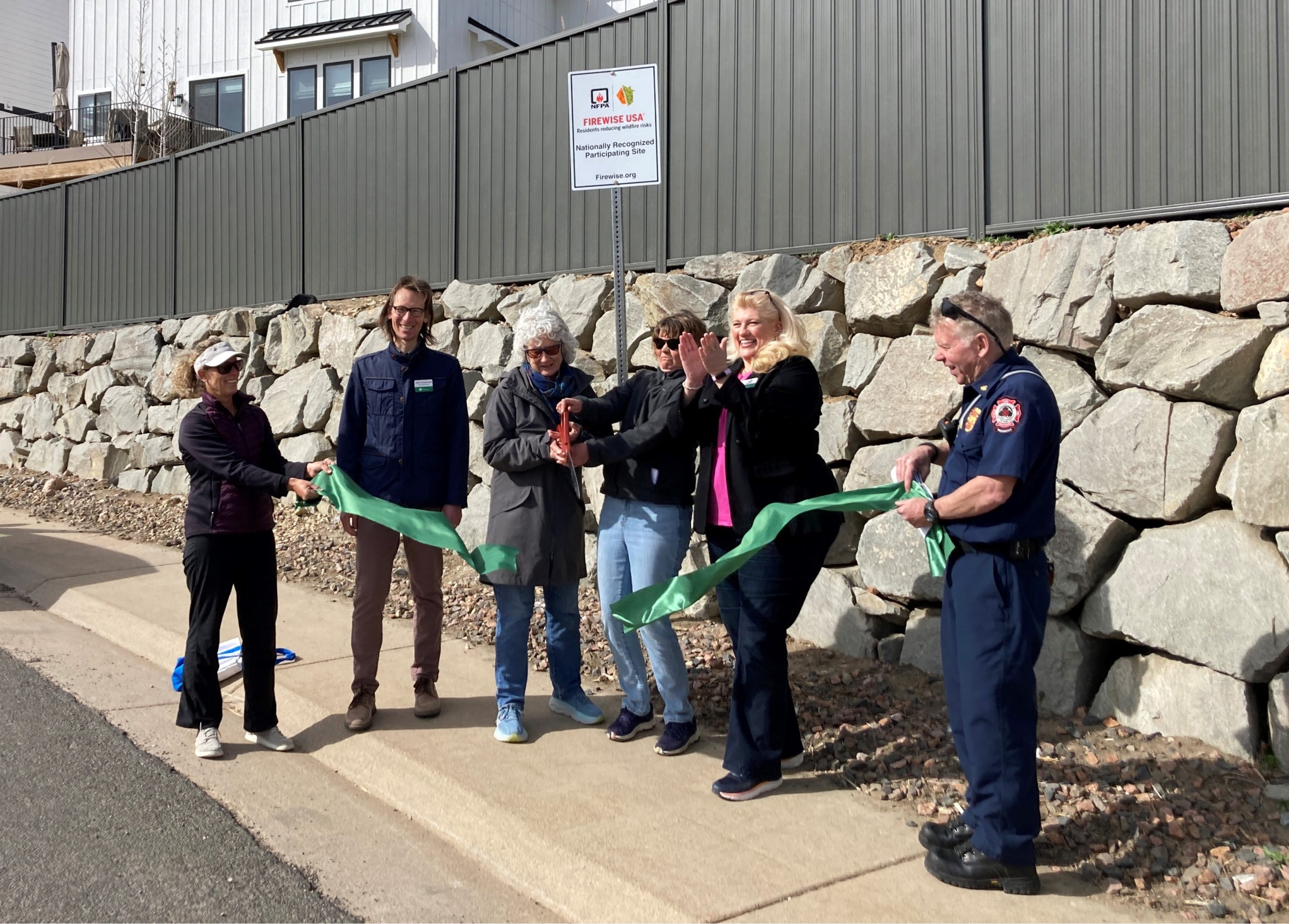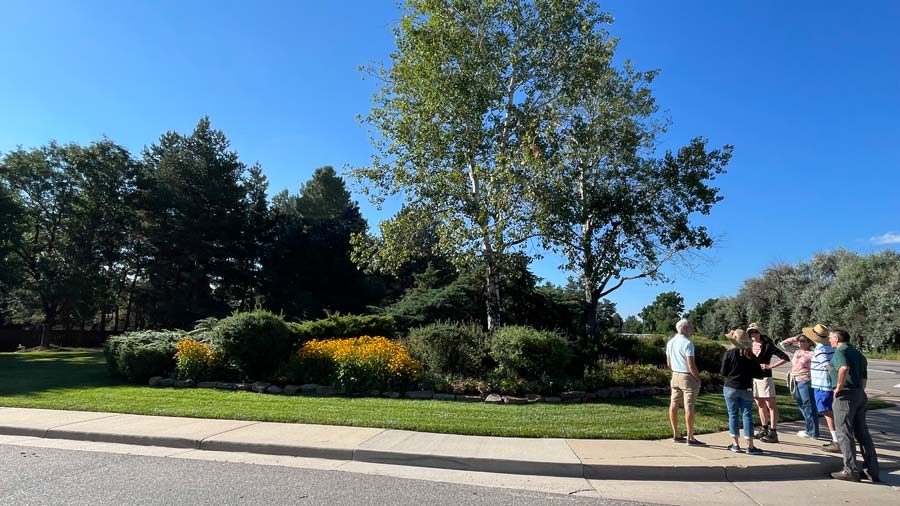Community effort is critical to successful wildfire mitigation in communities characterized by high-density development. This would include most neighborhoods, subdivisions, and HOAs in east Boulder County. In west Boulder County, this could include towns and historic townsites.
How Community Mitigation Planning Works:
Community mitigation involves the creation of a cohesive strategy around wildfire mitigation.
In dense neighborhoods, community members will need to work together to mitigate individual as well as community risk as conditions on any given property will impact fire behavior nearby. Homes, yards, and nearby natural spaces (woodlands and/or grasslands) are potential sources of structure ignition through embers, radiant heat, and/or direct flame contact during a wildfire.
Wildfire Partners supports NFPA’s Firewise USA model which offers a useful structure to help guide communities, and provides a nationally recognized designation for communities that meet the program standards. The designation process can take months or years depending on the existing level of community organization and wildfire mitigation. However, Firewise™ designation should be seen as a goal. Whether or not Firewise™ designation is a goal or not, the process of Community Mitigation Planning involves the following:
Stage 6: Keep it up!
Role of the Applicant/Community Liaison
The Community Liaison will be responsible for completing an application. Any community member may serve as the Community Mitigation Liaison and apply on behalf of their community. The applicant will be the primary point of contact with Wildfire Partners.
Role of Wildfire Partners
We have subject matter experts available to help guide your Community Mitigation Liaison/committee with:
- Community Outreach – Brainstorming and planning, presentations, and events.
- Technical Assistance – Guidance conducting community risk assessments, interpreting, and presenting your findings.
- Individual Home Assessments – Residents living within the community will qualify to apply if this is part of your action plan.
- Project Implementation – Project planning, contractor lists, and free chipping services.
- Financial Opportunities – Potential funding through the County, State, or other agencies.





 We highly encourage two or more people to work together as a wildfire mitigation committee, particularly for a larger community.
We highly encourage two or more people to work together as a wildfire mitigation committee, particularly for a larger community. If this is part of your action plan, homeowners can sign up for a home assessment.
If this is part of your action plan, homeowners can sign up for a home assessment.